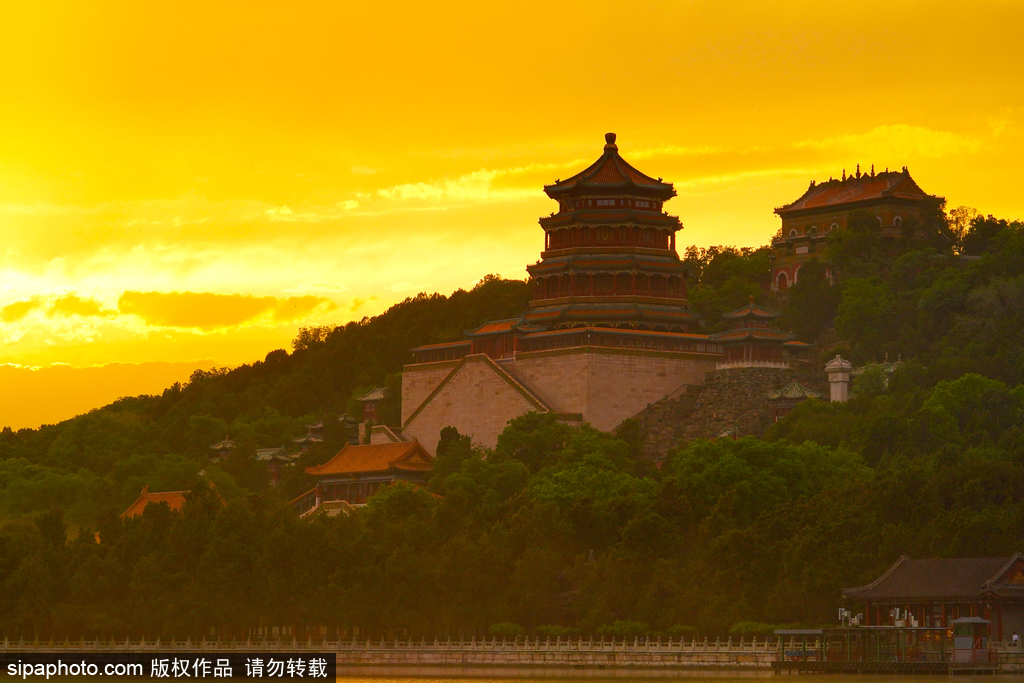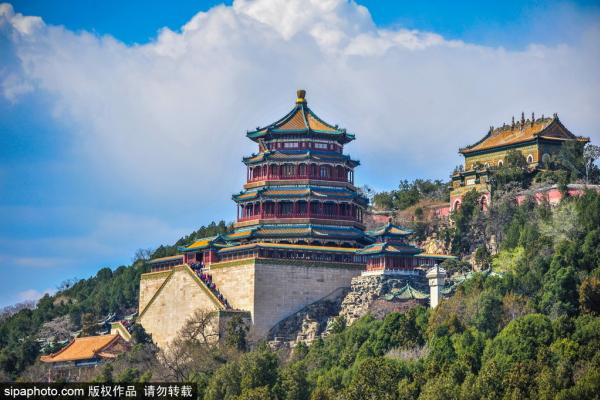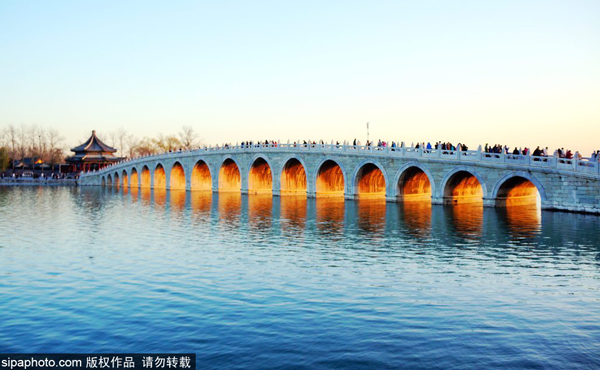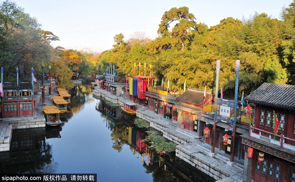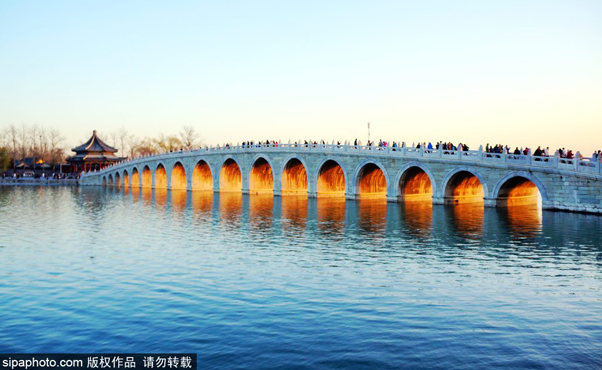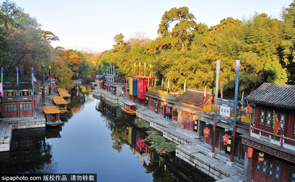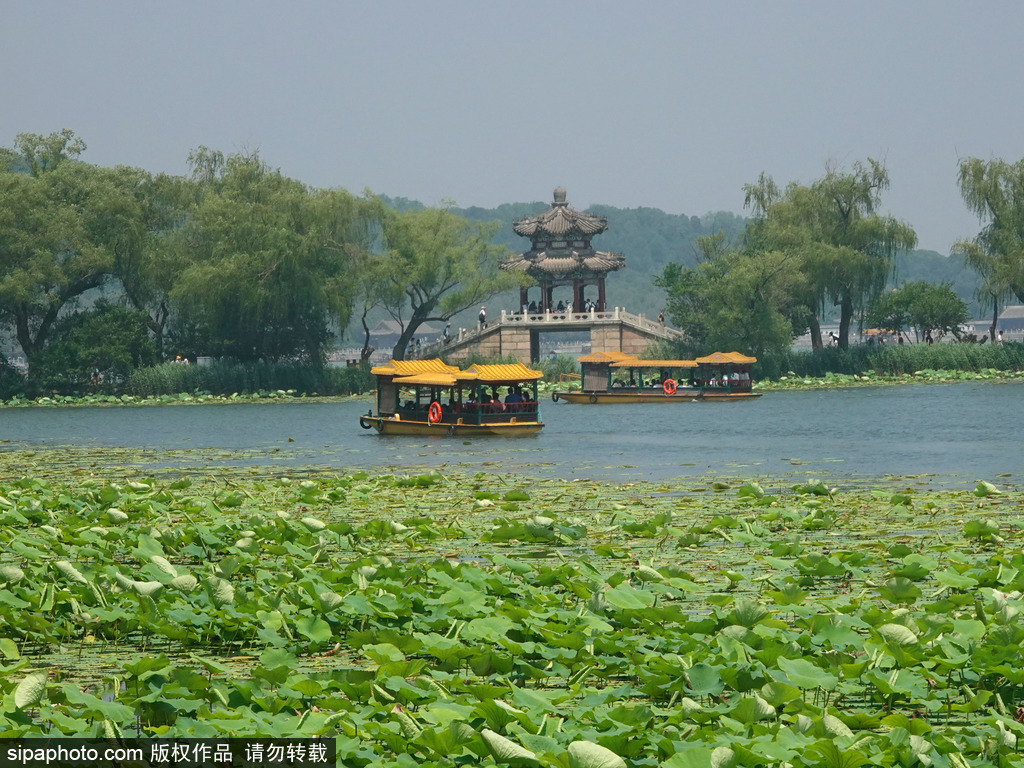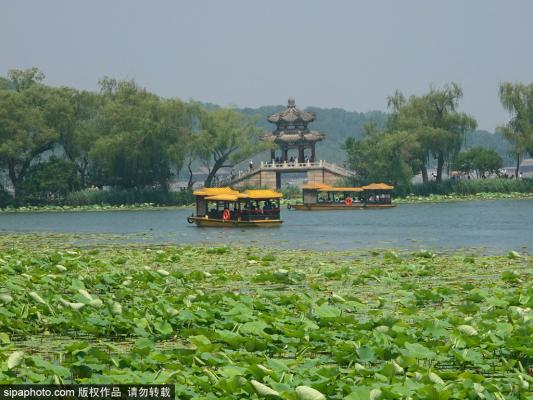The Summer Palace (颐和园)
The Summer Palace is the largest existing and the best-preserved royal garden in China, was one of the “Three Hills and Five Gardens” in the western suburbs of Beijing
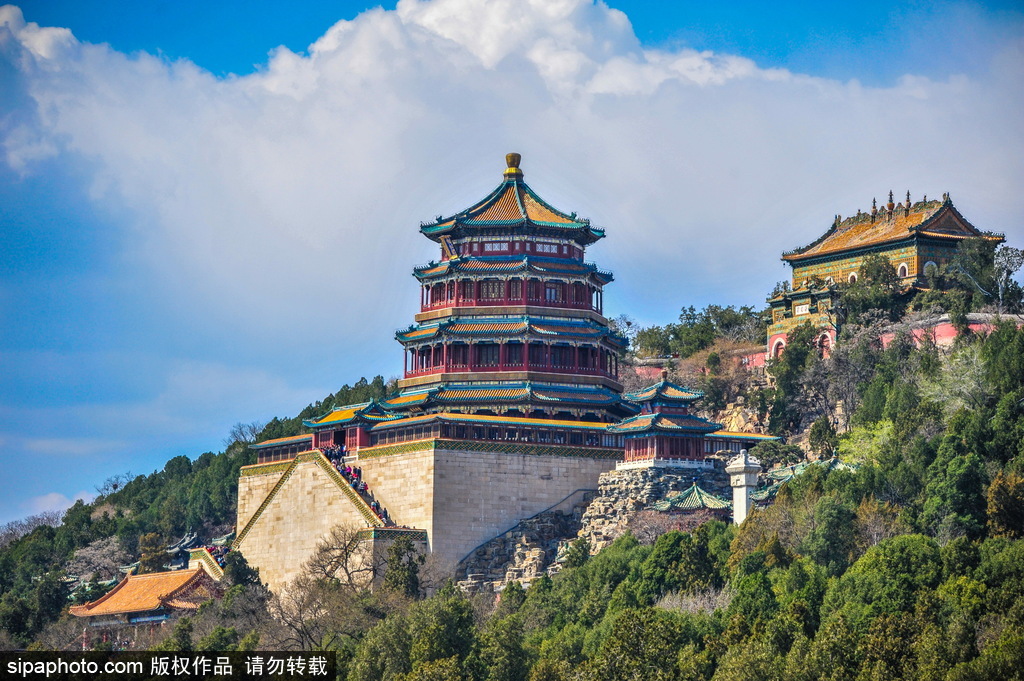
-
Tel:
+86 10 62881144 -
Best Time to Visit:
April to October -
Duration:
3 Hours -
Admission:
30 RMB (April - Oct.);20 RMB (Nov. - March)
Ticket Set:60 RMB (April - Oct.);50 RMB (Nov. - March) 30 RMB (April - Oct.);20 RMB (Nov. - March)
Ticket Set:60 RMB (April - Oct.);50 RMB (Nov. - March) -
Opening Hours:
April 1 - October 31: Opens at 6:00 AM, last entry at 7:00 PM, closes at 8:00 PM
November 1 - March 31: Opens at 6:30 AM, last entry at 6:00 PM, closes at 7:00 PM
Description
The Summer Palace (颐和园)
The Summer Palace is a vast ensemble of lakes, gardens and palaces in Beijing. Mainly dominated by Longevity Hill and Kunming Lake, it covers an expanse of 2.9 square kilometers, three-quarters of which is water. In December 1998, UNESCO included the Summer Palace on its World Heritage List. It declared the Summer Palace "a masterpiece of Chinese landscape garden design. The natural landscape of hills and open water is combined with artificial features such as pavilions, halls, palaces, temples...
Read MoreThe Summer Palace (颐和园)
The Summer Palace is a vast ensemble of lakes, gardens and palaces in Beijing. Mainly dominated by Longevity Hill and Kunming Lake, it covers an expanse of 2.9 square kilometers, three-quarters of which is water. In December 1998, UNESCO included the Summer Palace on its World Heritage List. It declared the Summer Palace "a masterpiece of Chinese landscape garden design. The natural landscape of hills and open water is combined with artificial features such as pavilions, halls, palaces, temples and bridges to form a harmonious ensemble of outstanding aesthetic value".
Located in the northwest outskirts of Beijing, 15 km from the city, the Summer Palace is originally named "Qingyiyuan" (Gardens of Clear Ripples). Based on the scenery of West Lake as the chief source, the garden absorbs the design method as well as the artistic conception of traditional southern Chinese garden. It gets the reputation of the “museum of the royal garden”.The Summer Palace, originally named Qingyi Yuan or the Garden of Clear Ripples, is the largest existing and the best-preserved royal garden in China. In the Qing Dynasty, it was one of the “Three Hills and Five Gardens” in the western suburbs of Beijing.
As the largest royal garden of the Qing Dynasty, it features wonderful scenery in four seasons. The palace gets more mild and colorful in autumn, the hue of which turns into warm colors like yellow, orange and red. Palaces sheltered in the warm color plants are especially charming. Also, some fallen leaves are floating over the water.
The most attracting water landscape in the Summer Palace lies on the Kunming Lake, where boasts vast waters and picturesque landscape. With gentle breeze and ripples, visitors can sail on the lake in summertime. While in warm days, a standing by the lakeside provides a broad view, some tourists are on powerboats and gaily-painted pleasure-boats, and others are oaring their way on small boats. With the reflection of bridges, islands, palaces and pavilions, the lake becomes vigorous and vibrant.
Highlights:
Longevity Hill
Longevity Hill was called as the Wengshan Mountain during the Yuan Dynasty. In the legend, an old man discovered a stone full of treasures on this mountain; therefore, the mountain was known as Wengshan Mountain. The mountain was renamed as Longevity Hill during the Qianlong Period, because temples were constructed then aiming at celebrating the birthday of the empress dowager. Unfortunately, the buildings repaired during the Qianlong Period were burnt and destroyed by Anglo-French Allied Force, and most of the existing ones were reconstructed during the Guangxu Period. The Kunming Lake before the mountain is a semi-artificial and semi-natural lake, with almost a history of 3500 years. The Summer Palace was constructed by taking Kunming Lake and Longevity Hill as basis and West Lake in Hangzhou as the template.
Longevity Hill is about 60 metres (200 feet) high and has many buildings positioned in sequence. The front hill is rich with splendid halls and pavilions, while the back hill, in sharp contrast, is quiet with natural beauty. The central Kunming Lake, covering 2.2 square kilometres (540 acres), was entirely man-made and the excavated soil was used to build Longevity Hill.
Seeing Sunset in the Summer Palace
Seeing sunset by the Kunming Lake may be the greatest pleasures of summer in the Summer Palace. Near sunset, you will encounter many shutterbugs and tourists by the east of Kunming Lake. The shadow of the 17-Arch Bridge and the setting sun from the faraway Western Hills add radiance and beauty to each other, forming the picturesque scenery as a Chinese poem described that “Sunset is of infinite beauty except impending of dusk”. On account of sun sets late in summer, you may also appreciate red setting sun reflecting in the Kunming Lake. In the hot summer, it is pretty cozy and leisure for you to have a stroll by the lake.
https://www.summerpalace-china.com/English/
Latest News
Explore
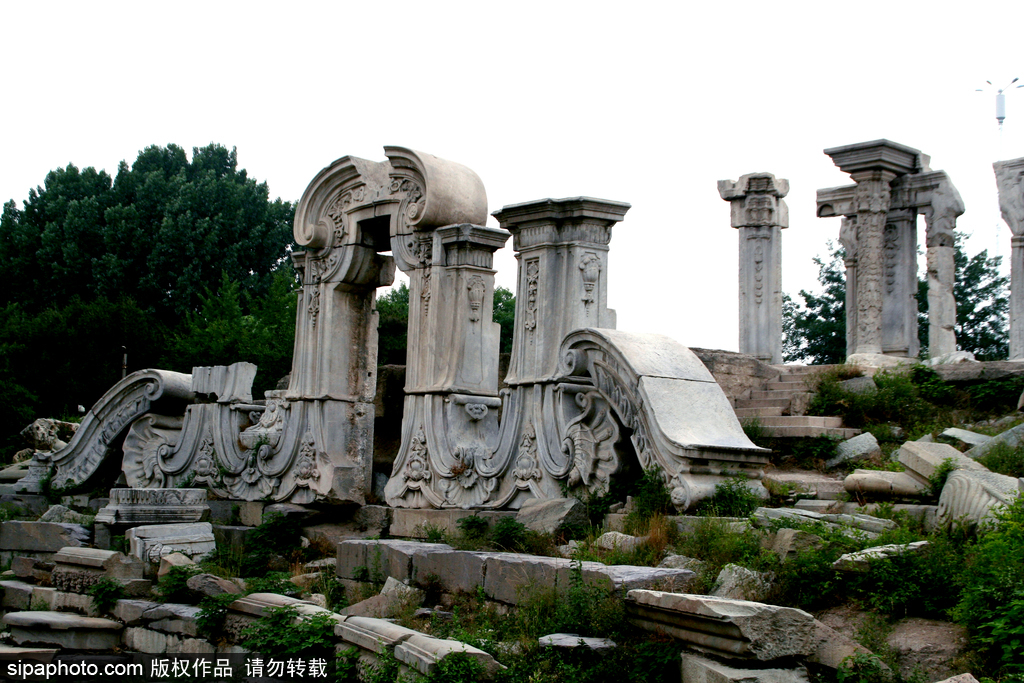
Yuanmingyuan Park
Yuanmingyuan Ruins Park was completed in 1988, with only the landscape system, garden pattern and building foundations remaining, and the remnants of rockery and carvings still visible.
Ming Tombs
Located in Changping District, 30 kilometers north of Beijing, the tomb area covers an area of about 120 square kilometers. The tombs of the Ming Emperor Zhu Di and the subsequent 12 emperors were built here.
Temple of Heaven
The Temple of Heaven is the largest ancient worship complex in China, where the emperors of the Ming and Qing dynasties worshiped the Heaven. It is a must-see attraction on a one-day trip to Beijing.
Do You Know
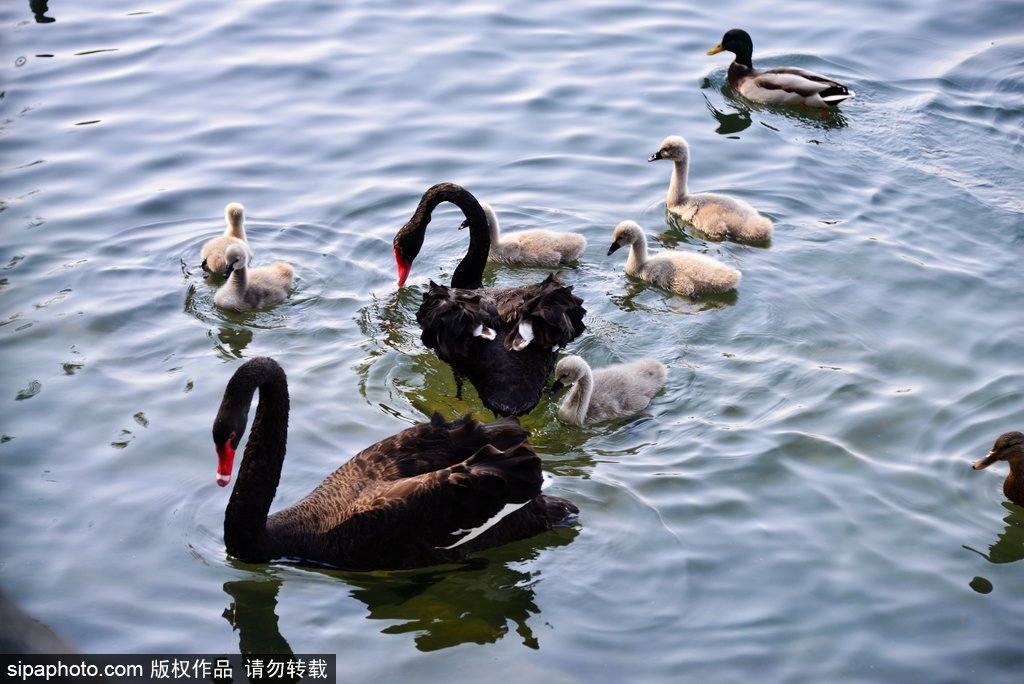
Birds Paradise
With the continuous strengthening of environmental management in Beijing, the sky is blue, water is clear and the ecology is greatly improved. The ancient Royal Garden Summer Palace has a large number of birds of prey roosting for the winter again every year.
